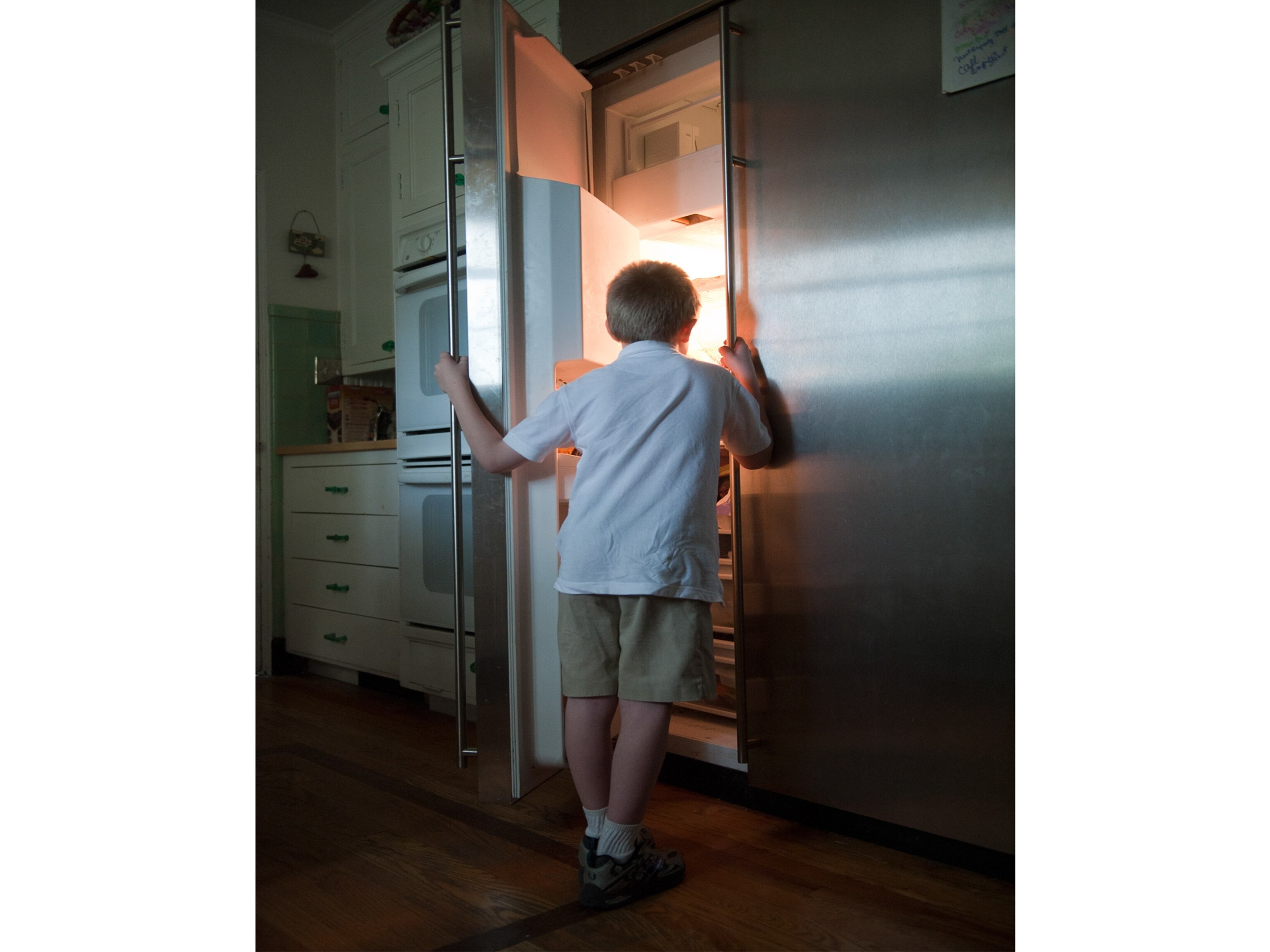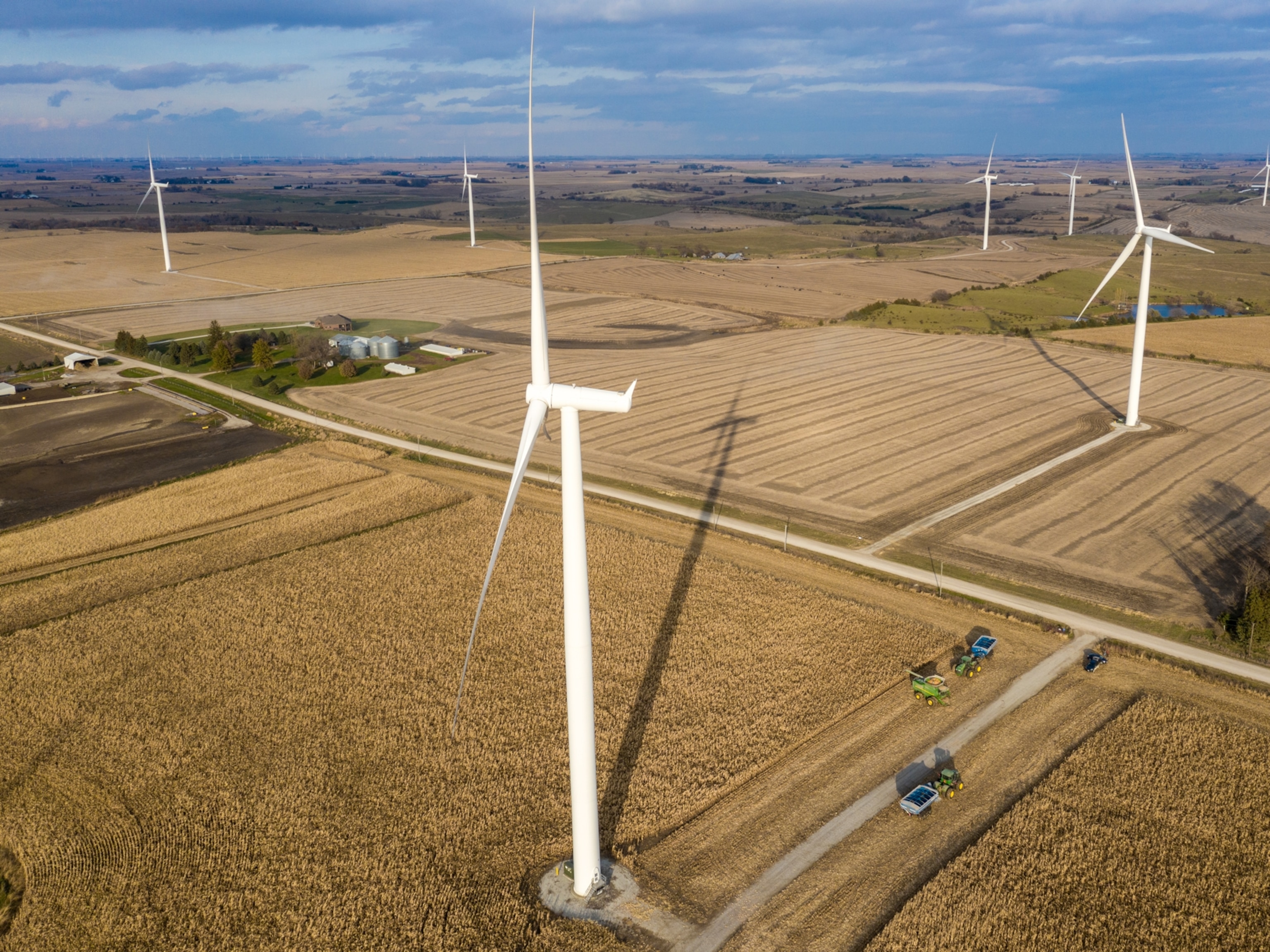
Why Your Fridge Pollutes and How It's Changing
The U.S. pushes to ensure new refrigerators and air conditioners contain less polluting chemicals.
Your home's refrigerator does more than store milk and meat. It also contains chemicals that emit greenhouse gases.
New fridges will likely be greener. In a switchover that will be largely invisible to consumers, more fridges and air conditioners are entering the U.S. market that will do less harm to the planet.
This week, the U.S. government took a step to expedite that rollout. As part of President Barack Obama's climate plan and ahead of global climate talks, the Environmental Protection Agency approved five less-polluting chemicals or refrigerants, one of which is flammable propane.
"We can turn the challenge of climate change into an opportunity to innovate our way to a better future," EPA Administrator Gina McCarthy said in announcing the final rule, which applies to fridges, freezers, vending machines, and window AC units.
EPA's rules often give the industry heartburn—but not this one. Companies are on board, knowing time is running out for refrigerants such as hydrofluorocarbons (HFCs) that pose a rapidly growing climate threat. These coolants—used in cars and buildings—emit heat-trapping gases during manufacturing, leakage, or disposal.
"We know HFCs are going to be phased down, so we want to be prepared," says Francis Dietz, spokesperson for the Air-Conditioning, Heating and Refrigeration Institute, noting the industry is already making changes. His group says it will spend five billion dollars in the next decade to research and develop safer coolants.
History shows that a solution to one problem, however, may exacerbate another. HFCs, for example, are a third-generation coolant that have largely replaced earlier ozone-depleting chemicals such as R-22, commonly known by the brand name Freon.
HFCs are safer for the ozone layer but not necessarily for the planet. They're nearly 10,000 times as potent as carbon dioxide. Unless their growth is checked, their emissions could double by 2020 and triple by 2030, according to U.S. data.
Obama has negotiated agreements with China and India to phase down HFCs. In November, more than a hundred countries agreed to hold talks this year to tackle the issue by using the Montreal Protocol, a successful 1987 international treaty that phased out earlier ozone-depleting substances. (See related stories: "3 Ways U.S.-China Conflict is Helping Climate Change" and "Healing the Ozone Layer: Chemist Says Treaty Is Working")
On Friday, at an environment conference in Cairo, Egypt, 54 African countries called for a phase down of HFC—a position backed by the United Nations Enivronment Programme's executive director Achim Steiner.
“Though HFCs currently represent a small fraction of the total greenhouse gas emissions, their global-warming-potential is very high, and their emissions could rise even up to 40% of annual carbon dioxide emissions by the middle of the century if society continues,” Steiner said in a keynote address at the meeting.
The U.S. is not banning HFCs—at least not yet—but advocating cleaner alternatives. EPA's new suggested refrigerants have much lower global-warming potential, a measure of the heat that a greenhouse gas traps in the atmosphere. These range from 3 to 675, compared with 1,400 to 4,000 for older compounds they'll replace.
Will homeowners be affected? They may not even notice, says Drusilla Hufford, director of EPA's Stratospheric Protection Division. Hufford says prior shifts in coolants, whether in cars or buildings, have been so seamless that they've been "invisible to consumers."
Newer refrigerants won't likely increase prices much, if at all, says Dietz, whose group represents manufacturers of central air-conditioning systems. He says its members have not expressed concerns about rising costs.
Yet the multi-year transition could have bumps. The U.S. is accelerating the phaseout of ozone-depleting R-22—no longer allowed in new air conditioners—and steadily reducing the amount available to service existing air conditioners.
As a result, consumers might pay higher prices for R-22. And propane, one of the newly approved refrigerants, is too flammable to be used safely in some ACs.
The EPA's Hufford says "a proliferation of incidents" have occurred in which flammable refrigerants have been used in non-flammable units. She adds: "We know they can be used safely" if they adhere to federal guidelines.
Consumers don't necessarily have to wait for a new AC system to make theirs greener.
"If you notice your home or car AC isn't working as well as it used to, get it professionally serviced," says Emily Davis, an attorney for the Natural Resources Defense Council, an environmental group. She says a technician can fix any leaks and may be able to suggest a safe, cleaner refrigerant replacement.
"I see this as an opportunity for consumers," Davis says of the coolant switchover, adding it offers them a "clear action" they can take to help protect the environment.
On Twitter: Follow Wendy Koch and get more environment and energy coverage at NatGeoGreen.
The story is part of a special series that explores energy issues. For more, visit The Great Energy Challenge.
Related Topics
You May Also Like
Go Further
Animals
- Octopuses have a lot of secrets. Can you guess 8 of them?
- Animals
- Feature
Octopuses have a lot of secrets. Can you guess 8 of them? - This biologist and her rescue dog help protect bears in the AndesThis biologist and her rescue dog help protect bears in the Andes
- An octopus invited this writer into her tank—and her secret worldAn octopus invited this writer into her tank—and her secret world
- Peace-loving bonobos are more aggressive than we thoughtPeace-loving bonobos are more aggressive than we thought
Environment
- Listen to 30 years of climate change transformed into haunting musicListen to 30 years of climate change transformed into haunting music
- This ancient society tried to stop El Niño—with child sacrificeThis ancient society tried to stop El Niño—with child sacrifice
- U.S. plans to clean its drinking water. What does that mean?U.S. plans to clean its drinking water. What does that mean?
- Food systems: supporting the triangle of food security, Video Story
- Paid Content
Food systems: supporting the triangle of food security - Will we ever solve the mystery of the Mima mounds?Will we ever solve the mystery of the Mima mounds?
History & Culture
- Strange clues in a Maya temple reveal a fiery political dramaStrange clues in a Maya temple reveal a fiery political drama
- How technology is revealing secrets in these ancient scrollsHow technology is revealing secrets in these ancient scrolls
- Pilgrimages aren’t just spiritual anymore. They’re a workout.Pilgrimages aren’t just spiritual anymore. They’re a workout.
- This ancient society tried to stop El Niño—with child sacrificeThis ancient society tried to stop El Niño—with child sacrifice
- This ancient cure was just revived in a lab. Does it work?This ancient cure was just revived in a lab. Does it work?
Science
- The unexpected health benefits of Ozempic and MounjaroThe unexpected health benefits of Ozempic and Mounjaro
- Do you have an inner monologue? Here’s what it reveals about you.Do you have an inner monologue? Here’s what it reveals about you.
- Jupiter’s volcanic moon Io has been erupting for billions of yearsJupiter’s volcanic moon Io has been erupting for billions of years
- This 80-foot-long sea monster was the killer whale of its timeThis 80-foot-long sea monster was the killer whale of its time
Travel
- Spend a night at the museum at these 7 spots around the worldSpend a night at the museum at these 7 spots around the world
- How nanobreweries are shaking up Portland's beer sceneHow nanobreweries are shaking up Portland's beer scene
- How to plan an epic summer trip to a national parkHow to plan an epic summer trip to a national park
- This town is the Alps' first European Capital of CultureThis town is the Alps' first European Capital of Culture




